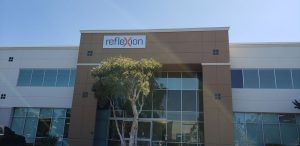Amongst all the crises and catastrophes created by COVID-19, one company has a cause for celebration. Therapeutic oncology company RefleXion Medical recently announced it closed an equity finance deal worth $100 million. Investors include Canadian-based Public Sector Pension Investment Board, along with J&J Innovation (JJDC), Pfizer Investments, Sofinnova Partners, and others.
Based in San Francisco, RelfeXion is leading the charge on curing cancer using an innovative new machine called the X1. The technology is equipped with biology-guided radiotherapy (BgRT) used to treat all kinds of visible tumors – even those that move quickly during specific bodily functions, like breathing or digesting. All this, the firm says, can be done in one session.
The X1 is the first machine to combine computed tomography (CT) with a linear accelerator to transmit precise radiation to the malignant tumor, avoiding healthy tissue altogether. The device also spins 60 times faster than existing technology and controls doses of radiation from 100 firing positions. These factors can significantly reduce both the side effects and the number of necessary treatments. RefleXion recently announced the Stanford Cancer Institute would be the first customer to buy the X1.
“The idea was to use individual emissions that make up a partially formed PET image, and are generated by the tumor, as a homing signal… to quickly guide radiotherapy to that location,” explained Sam Mazin, CTO. “In essence, turning cancer on itself to destroy it. It has been a rewarding journey from thinking of the idea years ago to co-founding RefleXion, and it is an honor to have Stanford as our first clinical and commercial client.”
Interestingly, RefleXion’s origin story starts with a grade 9 science fair that took place at Thornlea Secondary School in Thornhill, Ontario, Canada. Sam Mazin and Akshay Nanduri met there and became best friends. They continued to collaborate on science projects and compete academically all the way to the University of Waterloo, where they both received their Bachelor of Applied Science in Computer Engineering.
Their paths temporarily diverged while Nanduri went on to pursue his Master of Applied Science at the University of Waterloo. At the same time, Mazin started graduate work at Stanford University, where he ultimately finished with a Ph.D. in Electrical Engineering. In 2009, the two came back together to blend their entrepreneurial spirit with medical science and breathe life into what became RefleXion Medical.
While Reflexion is well on its way to introducing the X1 to the broader healthcare world, other technologies are waiting in the wings. In a press release, the firm announced that it received FDA clearance for its stereotactic body radiotherapy (SBRT), stereotactic radiosurgery (SRS) and intensity-modulated radiotherapy (IMRT) technologies.
RefleXion’s plan for the $100 million in capital is to ensure they can keep up momentum started with the FDA’s clearance for the X1 machine. The company will also scale up operations to bring the platform to market and hope to make it available to patients with all stages of cancer.























